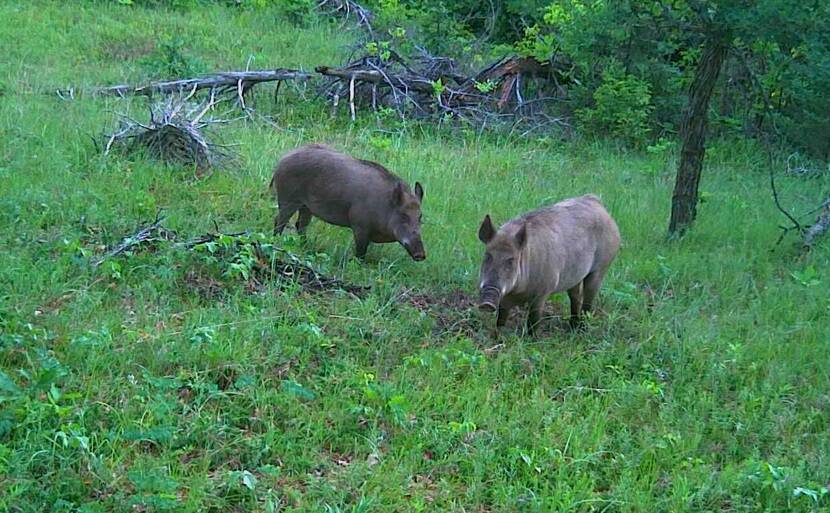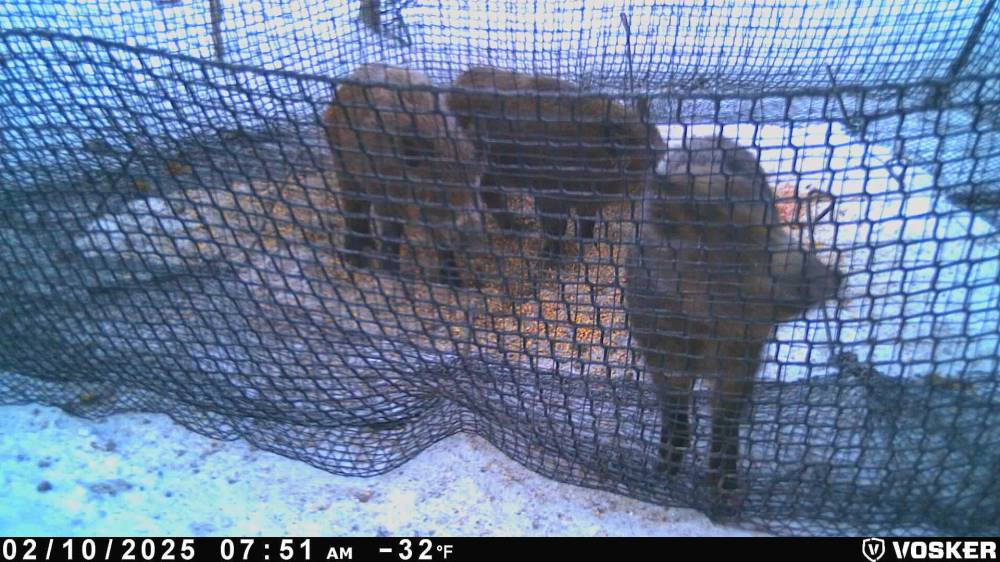The Problem with Pigs, Part II: Smart and destructive
» MOMENTS IN RIDING MOUNTAIN
Advertisement
Read this article for free:
or
Already have an account? Log in here »
We need your support!
Local journalism needs your support!
As we navigate through unprecedented times, our journalists are working harder than ever to bring you the latest local updates to keep you safe and informed.
Now, more than ever, we need your support.
Starting at $15.99 plus taxes every four weeks you can access your Brandon Sun online and full access to all content as it appears on our website.
Subscribe Nowor call circulation directly at (204) 727-0527.
Your pledge helps to ensure we provide the news that matters most to your community!
To continue reading, please subscribe:
Add Brandon Sun access to your Winnipeg Free Press subscription for only
$1 for the first 4 weeks*
*$1 will be added to your next bill. After your 4 weeks access is complete your rate will increase by $4.99 a X percent off the regular rate.
Read unlimited articles for free today:
or
Already have an account? Log in here »
Welcome to part two of The Problem with Pigs. In the previous article, I wrote that wild pigs shouldn’t really be able to persist in Manitoba, due almost exclusively to our long and cold winters.
Perhaps a good start to this article is to explore why wild pigs are such a big deal. Around the world, wild pigs are known to transfer disease to domestic pigs while acting as ecological bulldozers.
On the disease front, wild pigs can carry over 30 bacteria and viruses and more than 40 parasites, including trichinosis. In terms of their feeding habits, they damage field crops, including digging up newly planted fields of grain and potatoes. In natural areas, pigs are particularly destructive to wetlands where they root and wallow in shoreline vegetation, impacting water quality and creating erosion.

In the previous article, I asked the question on how, despite our winters, these pigs could maintain their populations here in Manitoba. The answer to their success can be summed up by three factors: their ability to find high quality food, the bolstering of the resident population through immigration, and finally, the direct and indirect impacts of climate change.
Exploring these factors in detail, the food source comes in the form of field corn. A cornfield offers the very best of all worlds. The standing stalks provide a convenient windbreak, allow pigs to hide from hunters, and of course the corn itself is the perfect food — easy to find, easy to digest, and rich in energy.
Without corn, it is unlikely that pigs could survive in Manitoba, especially during winters like this year. And this is where the indirect impacts of climate change become relevant. Corn was generally not available to wildlife 30 or 40 years ago, especially in the Westman region.
However, with longer and hotter summers, along with the creation of new varietals, corn is now a viable field crop in southern Manitoba. And pigs love corn and are especially attracted to areas where cattle producers are using cornfields as part of a winter grazing program.
And, as an aside, I’m not saying that corn should be eliminated as a crop in order to control wild pig populations. There are better ways of eliminating pigs as outlined later in this article.
An alternative food source worth mentioning is cereal crops that remain unharvested in the autumn and winter due to wet weather. Luckily, farmers are normally able to harvest their crops each autumn, making this source of food too unreliable to establish a large population of wild pigs.
The direct impacts of climate change are also important. Shorter, drier (less snow), and warmer winters aid in pig survival. In their natural ranges in Eurasia, pigs only thrive in areas where the mean or average winter temperatures are above -4 C.
Our winters are nowhere near that warm, but they are trending in that direction. And during relatively mild winters, like the ones we experienced in both 2023 and 2024, more pigs are able to survive the winter, bolstering the breeding population the next summer.
Finally, according to Dr. Wayne Lees, adding insult to injury, wild pig numbers are augmented from time to time by the addition of new pigs. Whether this is from pigs that escape farms or from pigs that are intentionally released, each year new adult pigs find their way into the wild.
In some jurisdictions hunters have been caught releasing pigs into the wild, with the intent to provide opportunities to hunt them. Stopping these releases, whether intentional or not, is the easiest solution to controlling the wild pig population.

There are a couple of other good news nuggets hidden here. The first is that wild pigs are not taking over Manitoba. While they may persist in small groups, they are unlikely to thrive anytime soon.
The second is that the interiors of large, protected areas such as Riding Mountain and Duck Mountain parks are never going to have persistent populations of wild pigs. There just isn’t enough food, there are too many predators, and the winter conditions are too harsh.
This leads me to the management of wild pigs. Much of the following information comes from the Squeal on Pigs website, the perfect place to get up-to-date information on wild pigs in Manitoba.
What are the solutions to ridding ourselves of these wild marauders? Contrary to belief, you can’t effectively hunt them into extinction. As reported, they are incredibly smart, and will immediately change their habits once they learn they are being hunted. In particular, they will scatter to new areas and become more active at night.
Instead, managers are currently using traps to capture larger groups of pigs. Again, they are very smart, so efforts are made to ensure that all the pigs in a group are captured at the same time, as any outside the trap will quickly learn to avoid them in the future. These trapping efforts are mainly centred in farm fields adjacent to Spruce Woods Provincial Park, the epicentre of wild pig populations in Manitoba.
According to the people in charge of the trapping program, over 90 wild pigs have been trapped so far this winter, which indicates that this is by far the most effective method of control. With a pre-winter population of between 300 and 1,000 animals (which is quite a range, but managers report that getting an actual population size of pigs is very difficult), it will be interesting to see how the wild population has fared after a normal Manitoba winter. In the meantime, if you spot a wild pig, report it to the Squeal on Pigs website.
» Ken Kingdon lives in the heart of the Riding Mountain Biosphere Reserve. Send him a text at 204-848-5020 if you have stories to share.
